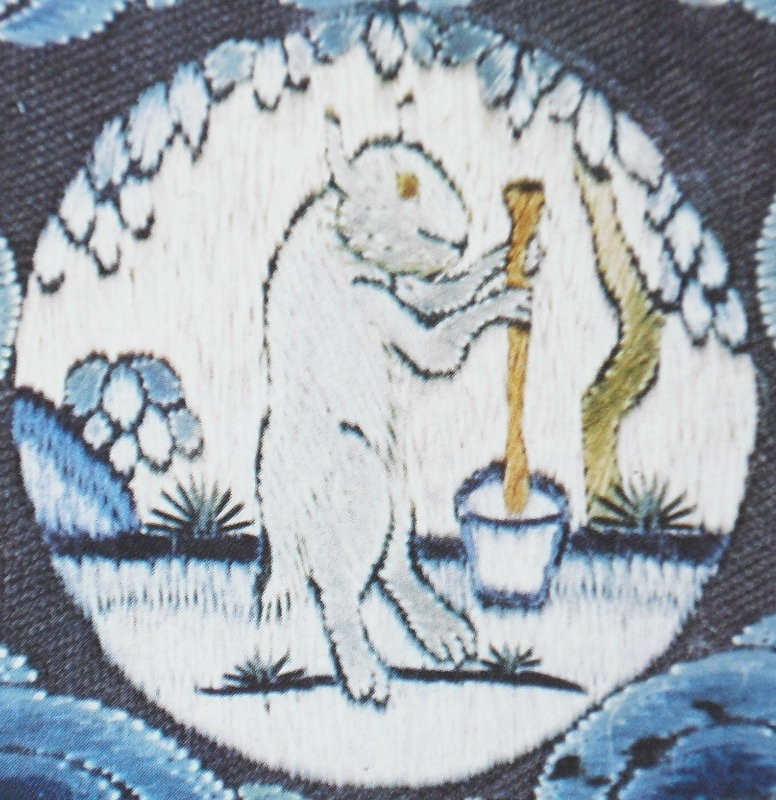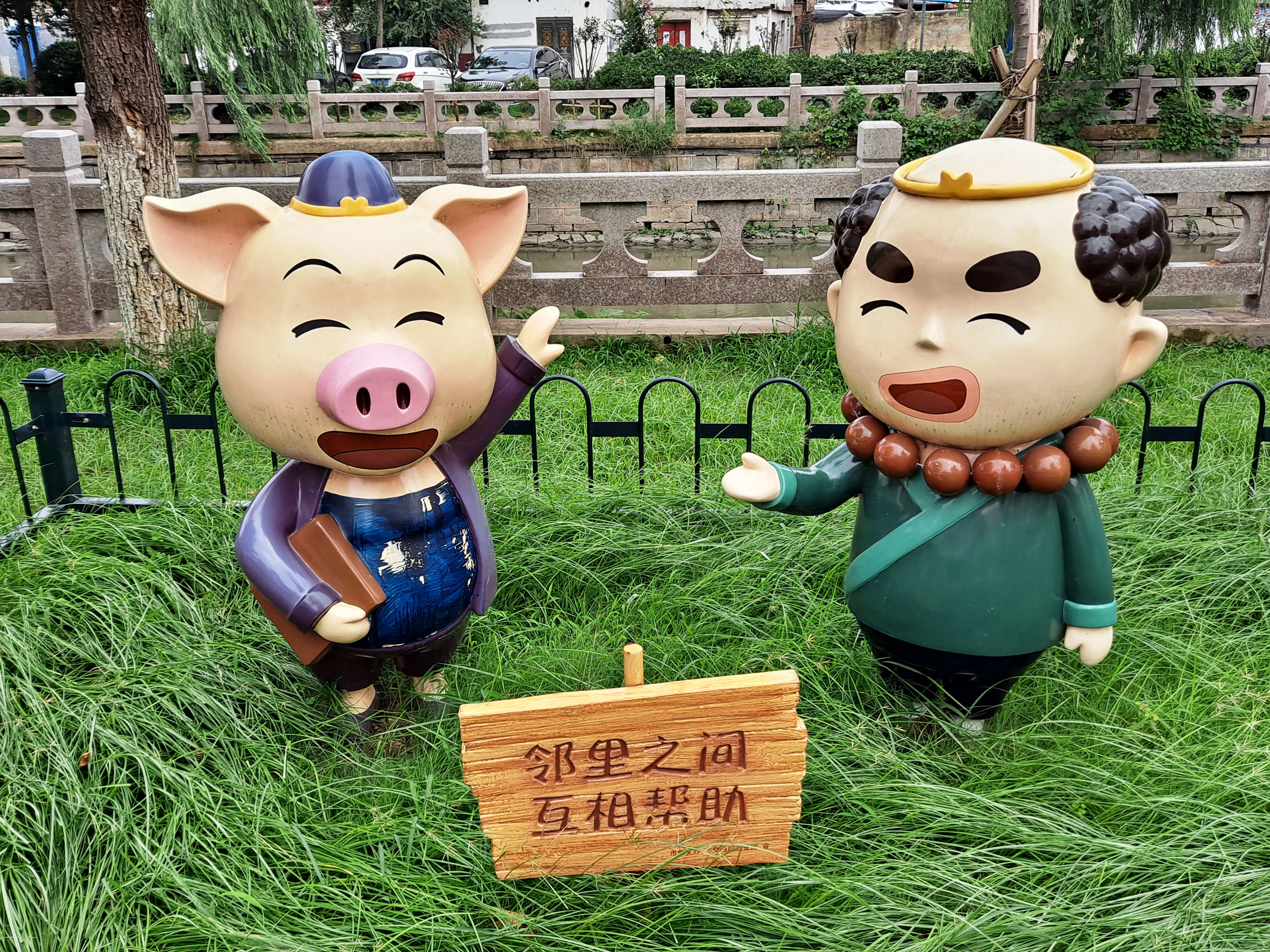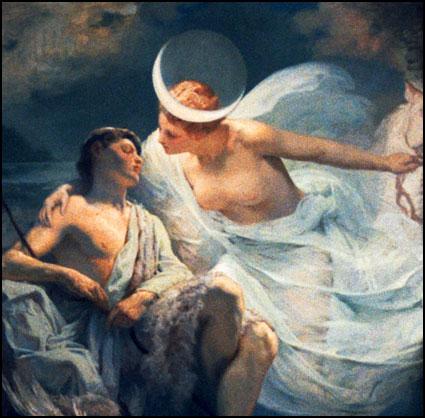|
Chang'e
Chang'e ( ; ), originally known as Heng'e (), is the goddess of the Moon and wife of Hou Yi, the great archer. Renowned for her beauty, Chang'e is also known for her ascending to the Moon with her pet Yu Tu, the Moon Rabbit and living in the Moon Palace (). She is one of the major goddesses in Chinese mythology, Chinese folk religion, Chinese Buddhism, Confucianism, and Taoism. In modern times, Chang'e is the namesake of the Chinese Lunar Exploration Program. Origins and descriptions Chang'e first appeared in '' Guicang'', a divination text written during the Zhou Dynasty (1046 BC – 256 BC). From the few preserved fragments of the text, it mentions "Yi shoots the ten Suns", and "Chang'e ascending to the moon." Chang'e—originally named —was renamed to avoid the taboo on sharing names with a deceased emperor, in this case, Liu Heng, an emperor from Han Dynasty. Many Chinese poems are written around the theme of Chang'e and the moon. In pre-Qin Dynasty (before 221 BC), ... [...More Info...] [...Related Items...] OR: [Wikipedia] [Google] [Baidu] |
Chinese Lunar Exploration Program
The Chinese Lunar Exploration Program (CLEP; ), also known as the Chang'e Project () after the Chinese Moon goddess Chang'e, is an ongoing series of robotic Moon missions by the China National Space Administration (CNSA). Engineering Program The program encompasses lunar orbiters, landers, rovers and sample return spacecraft, launched using the Long March series of rockets. A human lunar landing component may have been added to the program, after China publicly announced crewed lunar landing plans by the year 2030 during a conference in July 2023. The program's launches and flights are monitored by a telemetry, tracking, and command (TT&C) system, which uses radio antennas in Beijing and antennas in Kunming, Shanghai, and Ürümqi to form a VLBI antenna. A proprietary ground application system is responsible for downlink data reception. In 2019, China National Space Administration head Zhang Kejian announced that China is planning to build a scientific research s ... [...More Info...] [...Related Items...] OR: [Wikipedia] [Google] [Baidu] |
Mid-Autumn Festival
The Mid-Autumn Festival (for other names, see § Etymology) is a harvest festival celebrated in Chinese culture. It is held on the 15th day of the 8th month of the Chinese lunisolar calendar with a full moon at night, corresponding to mid-September to early October of the Gregorian calendar. On this day, the Chinese believe that the moon is at its fullest and brightest, coinciding with the time of harvest in the middle of autumn. The Mid-Autumn Festival is one of the most important holidays and celebrations in Chinese culture; its popularity is on par with that of Chinese New Year. The history of the festival dates back over 3,000 years. Similar festivals are celebrated by other cultures in East and Southeast Asia. During the festival, lanterns of all sizes and shapessymbolizing beacons that light the path toward prosperity and good fortune for the peopleare carried and displayed. Mooncakes, a traditionally rich pastry that is typically filled with sweet-bean or lotus-seed ... [...More Info...] [...Related Items...] OR: [Wikipedia] [Google] [Baidu] |
Chinese Mythology
Chinese mythology () is mythology that has been passed down in oral form or recorded in literature throughout the area now known as Greater China. Chinese mythology encompasses a diverse array of myths derived from regional and cultural traditions. Populated with engaging narratives featuring extraordinary individuals and beings endowed with magical powers, these stories often unfold in fantastical mythological realms or historical epochs. Similar to numerous other mythologies, Chinese mythology has historically been regarded, at least partially, as a factual record of the past. Along with Chinese folklore, Chinese mythology forms an important part of Chinese folk religion and Taoism, especially older popular forms of it. Many narratives recounting characters and events from ancient times exhibit a dual tradition: one that presents a more historicized or euhemerized interpretation, and another that offers a more mythological perspective. Numerous myths delve into the creation ... [...More Info...] [...Related Items...] OR: [Wikipedia] [Google] [Baidu] |
Moon Rabbit
The Moon rabbit, Moon hare or Jade rabbit is a mythical figure in both East Asian and indigenous American folklore, based on interpretations that identify the lunar mare, dark markings on the near side of the Moon as a rabbit or hare. In East Asian mythology, the rabbit is seen as pounding with a mortar and pestle, but the contents of the mortar differ among Chinese, Japanese, Korean, and Vietnamese folklore. In Chinese folklore, the rabbit, Yutu, is often portrayed as a companion of the Moon goddess Chang'e, constantly pounding the elixir of life for her and some show the making of cakes or rice cakes; but in Japanese and Korean versions, the rabbit is pounding the ingredients for mochi or tteok or some other type of rice cakes; in the Vietnamese version, the Moon rabbit often appears with Hằng Nga and Chú Cuội, and like the Chinese version, the Vietnamese Moon rabbit also pounding the elixir of immortality in the mortar. In some Chinese versions, the rabbit pounds medicine ... [...More Info...] [...Related Items...] OR: [Wikipedia] [Google] [Baidu] |
Hou Yi
Hou Yi () is a mythological Chinese archer. He was also known as Shen Yi and simply as Yi (). He is also typically given the title of "Lord Archer". He is sometimes portrayed as a god of archery or a ''xian'' descended from heaven to aid mankind. Other times, he is portrayed as either simply half-divine or fully mortal. His wife, Chang'e, is one of the lunar deities. Lore In Chinese mythology, there were originally 10 suns; in some forms of this myth they are the sons or grandsons of the Jade Emperor. Initially, the 10 suns would cross the sky one by one, but one day the 10 suns decided to come out all at once so that they could play with each other, and scorched the earth. Hou Yi was tasked by the mythical Emperor Yao—in some versions, the Jade Emperor—to rein in the suns. Hou Yi first tried to reason with the suns. When that did not work, he then pretended to shoot at them with his bow to intimidate them. When the suns again refused to heed Hou Yi's warnings, he began to ... [...More Info...] [...Related Items...] OR: [Wikipedia] [Google] [Baidu] |
Fengmeng
Feng Meng/Beng Meng (Peng Meng), or Fengmeng (), was a figure from Chinese mythology closely associated with the divine archer Houyi. He was the apprentice of the divine archer and was envious of his skill with the bow and arrow. In a fit of envy and anger, Feng Meng murdered Yi with a club made from a peach tree. Role in mythology After Houyi’s wife, Chang'e consumed the elixir of immortality, Houyi realized that he would never again be immortal and would soon die. He resolved to pass his knowledge and skills of archery and hunting to the next generation to ensure that they would live on after his death. In order to do so, he decided to take an apprentice, Feng Meng; this apprentice soon became an expert archer. But even so, he was still envious of Houyi's superior abilities, especially after a fateful archery competition in which Houyi killed as many geese as Feng Meng did with his archery despite having a far more difficult target. Feng Meng made multiple attempts on his ol ... [...More Info...] [...Related Items...] OR: [Wikipedia] [Google] [Baidu] |
Zhu Bajie
Zhu Bajie, also named Zhu Wuneng, is one of the three disciples of Tang Sanzang, along with Sun Wukong and Sha Wujing, and a major character of the 16th century novel ''Journey to the West''. ''Zhu'' means "swine" and ''Bajie'' means "eight precepts". Prior to his being recruited by the bodhisattva, Guanyin, Zhu Bajie went by literally "Strong-Maned Pig"). Buddhist scholars consider that both expressions are related to "Śīla pāramitā". In many English versions of the story, Zhu Bajie is called "Monk Pig", "Pig", "Piggy", or "Pigsy". Zhu Bajie is a complex and developed character in the novel. He looks like a terrible humanoid monster that's part-human and part- pig, who often gets himself and his companions into trouble through his laziness, gluttony, and propensity for lusting after pretty women. He looks up to his senior disciple Sun Wukong as a big brother. Though he occasionally acts rebelliously when injured by Wukong's constant teasing, his schemes usually end in ... [...More Info...] [...Related Items...] OR: [Wikipedia] [Google] [Baidu] |
Journey To The West
''Journey to the West'' () is a Chinese novel published in the 16th century during the Ming dynasty and attributed to Wu Cheng'en. It is regarded as one of the Classic Chinese Novels, great Chinese novels, and has been described as arguably the most popular literary work in East Asia. It was widely known in English-speaking countries through the British scholar Arthur Waley's 1942 abridged translation ''Monkey (novel), Monkey''. The novel is a fictionalized and fantasy, fantastic account of the pilgrimage of the Chinese Buddhism, Buddhist monk Xuanzang, who went on a 16-year journey to India in the 7th century AD to seek out and collect Buddhist scriptures (sūtras). The novel retains the broad outline of Xuanzang's own account, ''Great Tang Records on the Western Regions'', but embellishes it with fantasy elements from folk tales and the author's invention. In the story, it deals entirely with the earlier exploits of Sun Wukong, a monkey born on Mount Huaguo, Flower Fruit Mount ... [...More Info...] [...Related Items...] OR: [Wikipedia] [Google] [Baidu] |
Guicang
''Guicang'' (歸藏, "Return to the Hidden") is a divination text dating to the Zhou dynasty, which was once circulated alongside the ''I Ching''. The text of ''Guicang'' was rediscovered in a rural bog in 1993; it had been lost for over two thousand years. ''Guicang'' contains the sixty-four hexagrams and stories relating to each of them. For example, Hexagram 54 of the ''I Ching'', "Returning Maiden," is accompanied by the story of how the maiden Chang'e Chang'e ( ; ), originally known as Heng'e (), is the goddess of the Moon and wife of Hou Yi, the great archer. Renowned for her beauty, Chang'e is also known for her ascending to the Moon with her pet Yu Tu, the Moon Rabbit and living in the Mo ... stole the medicine of immortality from Xi Wangmu and, upon returning home, used the hexagrams to determine that she should flee to the moon. Footnotes I Ching Taoist texts Confucian texts Chinese classic texts Chinese books of divination Chinese folk religion {{ta ... [...More Info...] [...Related Items...] OR: [Wikipedia] [Google] [Baidu] |
Lunar Deity
A lunar deity or moon deity is a deity who represents the Moon, or an aspect of it. These deities can have a variety of functions and traditions depending upon the culture, but they are often related. Lunar deities and Moon worship can be found throughout most of recorded history in various forms. Moon in religion and mythology Many cultures have implicitly linked the 29.5-day lunar cycle to women's menstrual cycles, as evident in the shared linguistic roots of "menstruation" and "moon" words in multiple Language family, language families. This identification was not universal, as demonstrated by the fact that not all moon deities are female. Still, many well-known mythologies feature moon goddesses, including the Greek goddess Selene, the Roman goddess Luna (mythology), Luna, the Chinese goddess Chang'e, and the Mayan goddess Coyolxauhqu, who's decapitation may represent a lunar eclipse. Several goddesses including Artemis, Hecate, and Isis did not originally have lunar aspec ... [...More Info...] [...Related Items...] OR: [Wikipedia] [Google] [Baidu] |






